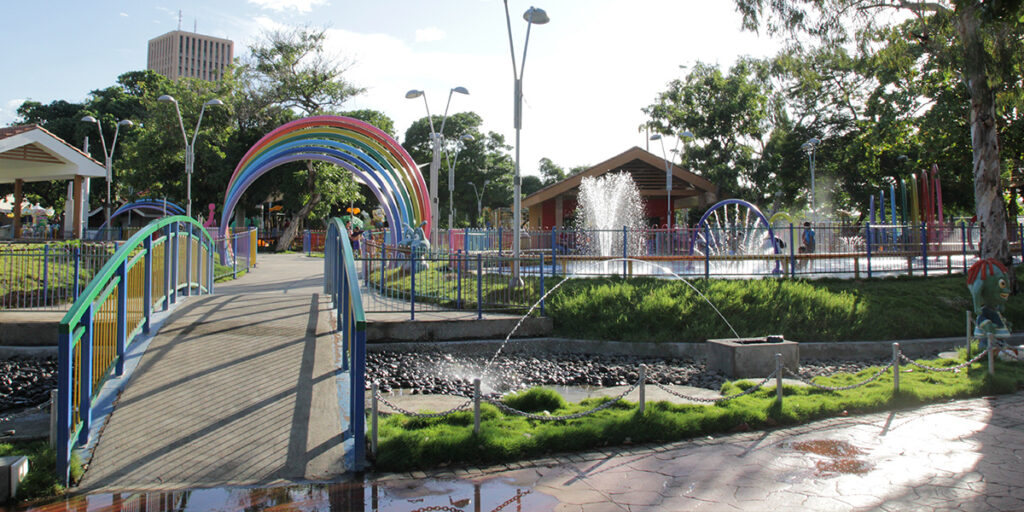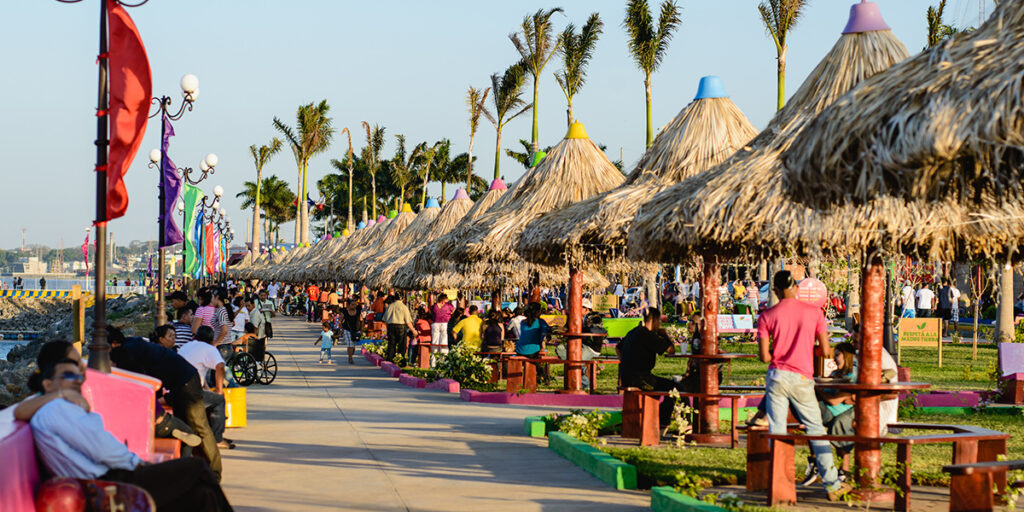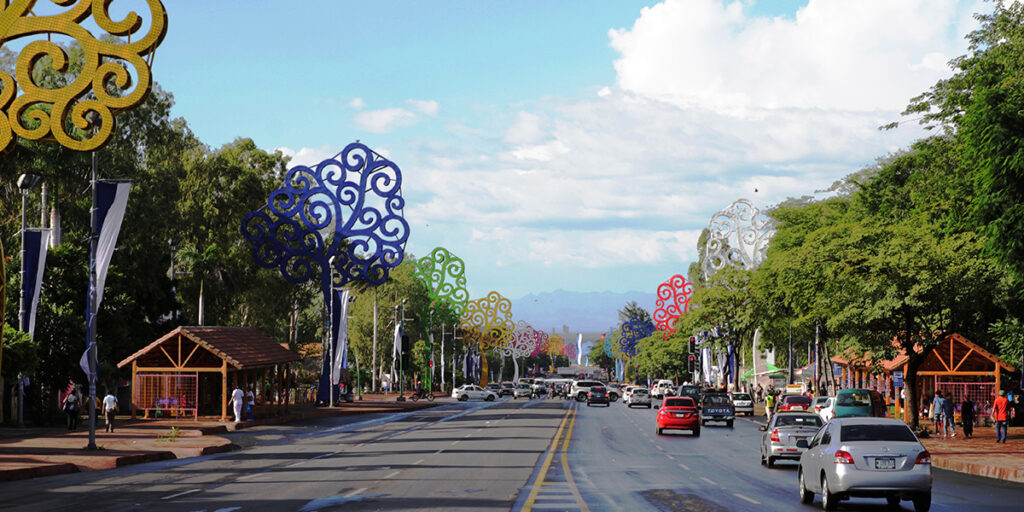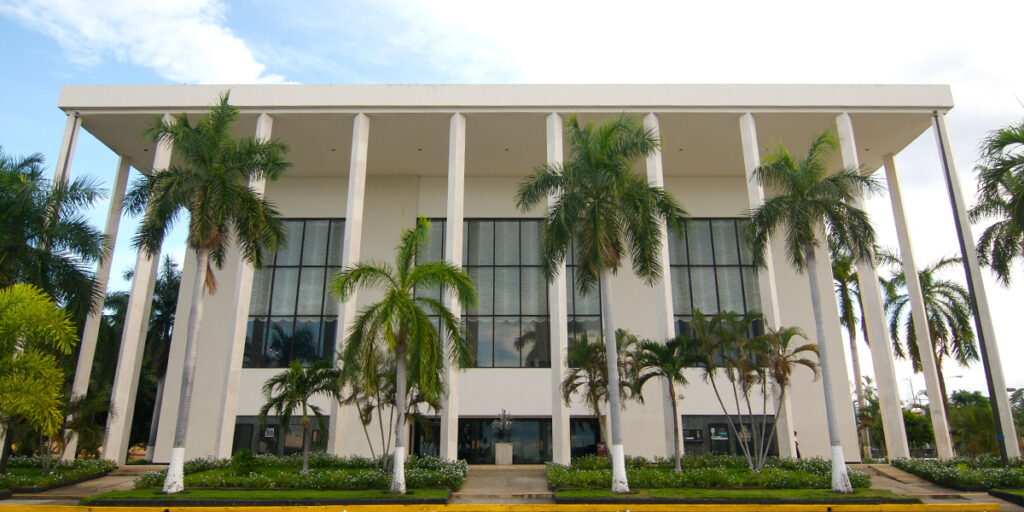Managua
The name of Managua comes from the Nahuatl “managuac,” and means “Surrounded by Ponds.” It is also known as “La Novia del Xolotlán.” On the shores of Lake Xolotlán, Managua offers very interesting sites that are visited by both locals and foreigners, for their beauty and historical interest: the Plaza of the Revolution, historic site celebrating the triumph of the people over the Somoza dictatorship; the modern Presidential House, and the Palace of Culture, which houses the National Museum, as well as valuable murals; the Cathedral of Santiago de Managua, semi-destroyed by the 1972 earthquake, however, it is still possible to appreciate its architectural beauty from the outside. A few steps away you will find the beautiful carved marble fountain, in honor of the Nicaraguan poet Rubén Darío; the Rubén Darío National Theater, where an intense artistic and cultural activity takes place. Through the enormous stained-glass windows of the theater, you can appreciate the beauty and immensity of the lake, and the Momotombo and Momotombito volcanoes.
Managua also has three important natural reserves: the Chiltepe Peninsula, with its two crater lagoons; the El Chocoyero-El Brujo Reserve, with its waterfalls; and the Montibelli Private Reserve, ideal for the practice of bird watching.





